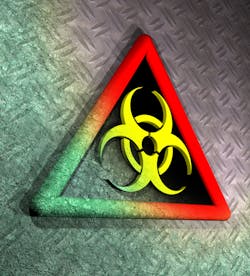ASSP Foundation Receives Second Grant to Advance Workplace Safety
The American Society of Safety Professionals (ASSP) Foundation received a second Susan Harwood education and training grant for $159,967 from the U.S. Department of Labor’s Occupational Safety and Health Administration (OSHA), directly supporting the ASSP Foundation’s development of free workplace safety and health instructional materials on combatting infectious disease.
“Earning federal grants confirms the need in the greater community for new resources designed to help safety and health professionals better protect workers in all industries,” said ASSP Foundation Chair Trish Ennis, CSP, ARM, CRIS. “The creation of programs through these grants shows our commitment to doing even more for the occupational safety and health community.”
This year’s OSHA grant distribution will enable nonprofit organizations to assist employers in identifying infectious disease hazards—including the SARS-C0V-2 virus that causes COVID-19—and implementing preventive measures to maintain safe workplaces. The ASSP Foundation will use the grant to produce live virtual instruction on infectious diseases and pandemic preparedness and response for businesses with 250 or fewer employees.
Last year, the ASSP Foundation was awarded a $74,960 Harwood grant to create free training materials on personal protective equipment (PPE) designed to prevent falls from height. Three education modules developed under the grant aim to assist construction, demolition, and material handling companies increase the proper use of PPE. A pilot training program recently took place with 30 at-risk workers, demonstrating full-body harnesses, self-retracting devices, anchorage connectors and other elements of fall arrest and restraint systems.
Working at height is inherently hazardous, exposing workers to significant risks that range from falls from roofs, scaffolding and ladders to slips through floor and roof openings. Above-ground work such as window washing and tree trimming remains a leading cause of injuries and OSHA citations.
“Access to cost-effective and high-caliber PPE training has been an ongoing concern for employees and small businesses,” Ennis said. “Our foundation is now helping to fill that void.”
OSHA awards Harwood grants annually to nonprofits that develop training programs for small-business employers and underserved vulnerable workers in high-hazard industries.
